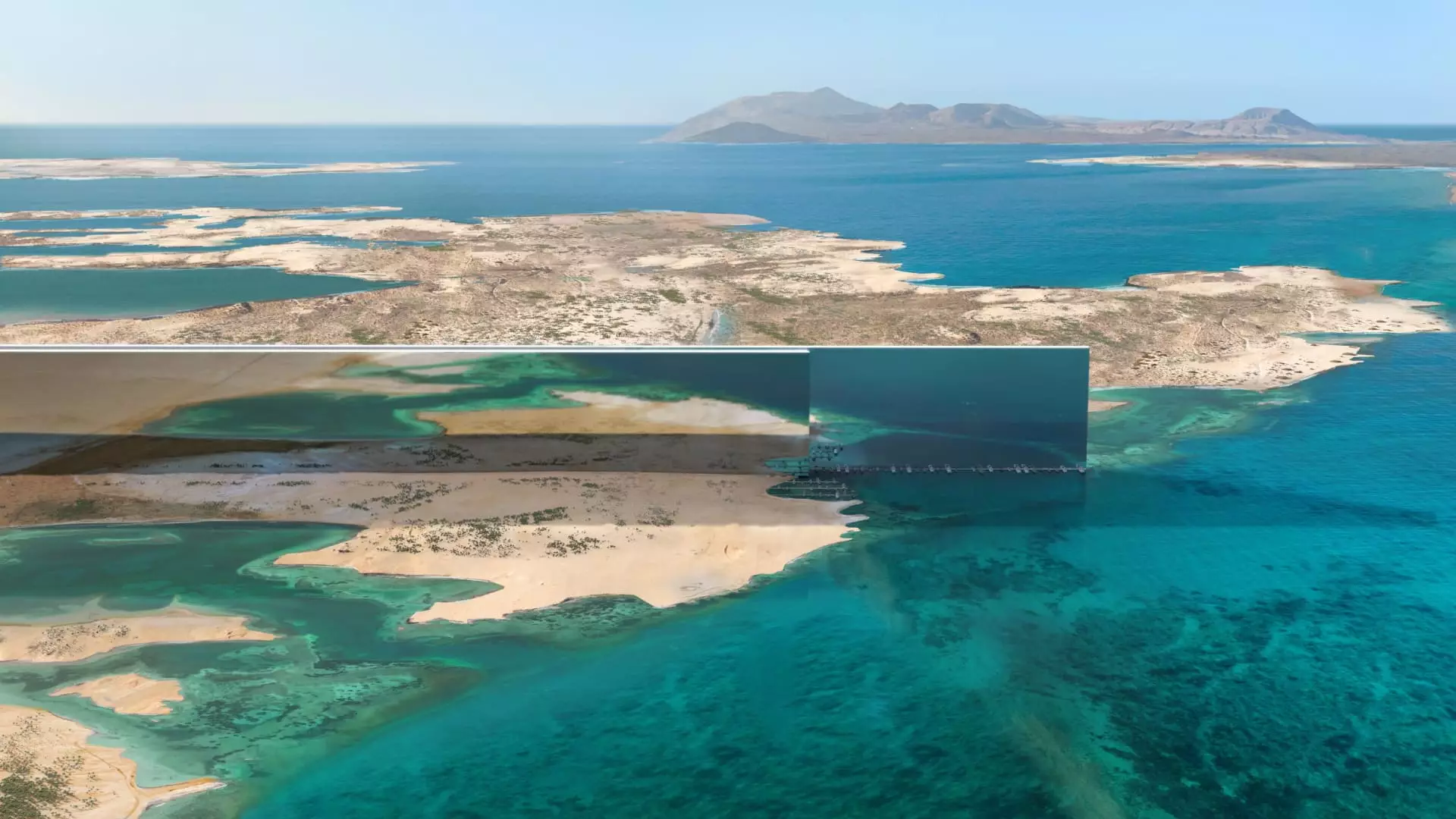Saudi Arabia’s grand ambitions to reinvent itself as a global hub of innovation and modernity through colossal projects like Neom and The Line are emblematic of a nation caught between visionary aspiration and growing skepticism. These initiatives, poised to redefine urban living and technological integration on a revolutionary scale, are increasingly viewed through a pragmatic lens. It is no longer enough for governments to promise shiny new cities and hyper-efficient infrastructure; they must grapple with the stark economic realities that threaten their feasibility. The sweeping narrative of the future, evidently captivating for a regime eager to escape dependence on oil, risks unraveling under the weight of cost overruns, technological doubts, and fluctuating global markets.
Much like a mirage in a desert, these projects have fueled hopes yet obscure the harsh truths that lie beneath. While Saudi officials tout The Line as a marvel of sustainability and technological prowess—an ultra-long urban corridor designed to house millions in controlled, interconnected environments—the reality on the ground reveals a colossal construction site still in its infancy. The ambition appears disproportionate to current capabilities, with the entire venture resembling a high-stakes gamble that could easily collapse under economic and technical pressures. The allure of futuristic living, underpinned by high-speed rail and cutting-edge architecture, seems increasingly disconnected from the pragmatic considerations of cost, feasibility, and long-term sustainability.
Economic Vigilance or Strategic Overreach?
The Saudi government’s recent decision to appoint consulting firms to re-evaluate the city’s prospects signals not only prudence but also manufactured uncertainty, as part of a broader shift in attitude. Perched at the crossroads of fiscal prudence and visionary exuberance, the kingdom is testing whether these audacious plans are merely inflated dreams or feasible realities. With oil prices languishing below the levels required to sustain such extraordinary investments, the need for a more cautious approach becomes undeniable. A project estimated at around $1.5 trillion, once considered a landmark of futuristic urban planning, now faces the cold reality of budget constraints and fluctuating global markets.
From an economic standpoint, the risks are palpable. The high cost of development combined with potential delays could undermine the entire project’s credibility. It becomes increasingly clear that the Saudi leadership faces a stark choice: scale back and produce a more realistic, economically sound version of Neom, or risk the fate of a financially unsustainable pipe dream. The former seems more plausible, especially given the recent job cuts and reassessments, which suggest the project is in a phase of strategic pruning rather than outright abandonment. However, it also signals a shift from unrestrained ambition toward a more cautious, if less glamorous, future planning process.
The Human and Political Cost of Overreach
Behind the gleaming facades and technological promises, there lurks a deeper issue: the erosion of credibility among stakeholders and investors. Critics have pointed out that the optimistic forecasts from consultants and architects—often referred to as “yes men”—have inflated expectations, creating an impression that the projects are more advanced than they truly are. This culture of overpromise, combined with a lack of transparency and accountability, has begun to take its toll on trust. When lofty visions encounter the brutal truth of engineering challenges, budget shortages, and market realities, disillusionment is inevitable.
The political implications are equally profound. Crown Prince Mohammed bin Salman’s vision, driven by a desire to showcase Saudi Arabia’s modernization efforts, risks being undermined if these megaprojects fail to deliver. The narrative of transformation underpins the legitimacy of those in power, and setbacks could fuel internal dissent or external criticism. While the government insists that “big ideas require big risks,” this confidence becomes fragile if financial and technical hurdles persist. The palpable trend toward downsizing and reassessment reveals a recognition of overreach—an acknowledgment that grandiosity alone cannot secure progress.
The Fragile Future of Saudi’s Vision 2030
As Saudi Arabia pivots to pragmatic adjustments and re-evaluates its mega-projects, one vital question remains: Can visionary ambitions survive the pragmatic recalibration? The kingdom’s overarching strategy—Vision 2030—aims to diversify the economy, create jobs, and modernize its society, but these objectives are now threatened by the very projects meant to symbolize renewal. If The Line and Neom are scaled back or delayed significantly, it might cause a ripple effect, hampering the nation’s overarching goals and diminishing international confidence. The bold promises of the past risk being replaced by a more sober, perhaps more sustainable, reality.
There is a certain hubris that underpins these initiatives—a belief that technological innovation and sheer ambition can surmount economic and engineering challenges. While the desire to propel Saudi Arabia into a new age is commendable, it is equally essential to acknowledge the limits of what can be achieved within realistic timelines and budgets. The current reassessment signals not failure, but a necessary course correction. Whether these mega-visions will evolve into manageable, iterative projects or risk stagnation remains to be seen, but what is clear is the importance of balancing aspiration with reality to avoid the ignominy of spectacular failure.


Leave a Reply